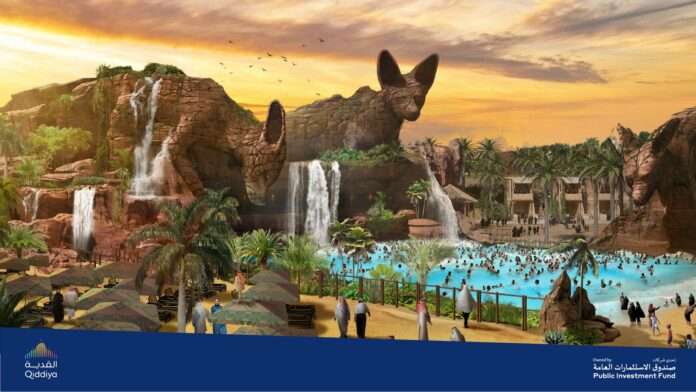Issue 97 Editorial by Martin Palicki, InPark Magazine publisher
Attending the Saudi Entertainment and Attractions Expo this spring in Riyadh it was clear that the industry is invested in the Kingdom of Saudi Arabia (KSA). The trade show floor was full of vendors ready to help build the entertainment business in KSA. Additionally, the aisles were bustling with buyers – reportedly mostly from KSA – looking to advance their developments.
The money is there to back it up. Crown Prince Mohammed bin Salman’s Vision 2030 is an ambitious plan to wean the country off its dependence on oil revenues and diversify its economy. If that sounds familiar, it’s the same strategy the United Arab Emirates (UAE) employed several decades ago to some level of success.
There are three pillars to the Vision 2030 plan: A vibrant society, a thriving economy, and an ambitious nation. While tourism is only one stated part of Vision 2030, many of the identified projects focus on creating an entertainment and cultural identity for the country and as such rely on our industry to help create, plan and execute many of the components.
Importantly, many of the projects have financial backing. KSA’s Public Investment Fund (PIF) is infusing Vision 2030 with capital. According to their own website, the PIF was started in 1971 to help support “companies of foundational importance to the Saudi economy.” In 2015 PIF was “reborn” to help drive implementation of Vision 2030. The Crown Prince chairs PIF’s board so alignment with his Vision 2030 is essentially guaranteed.
Though PIF invests in projects and companies around the world, it is primarily recognized for its support on five giga-projects within KSA:
NEOM: Focused on creating a city of the future, NEOM is perhaps best known for its all-encompassing urban concept called The Line.
Red Sea: The concept here is luxury and the archipelago along the Red Sea will soon be home to high end resorts and facilities.
Qiddiya: Perhaps most obviously aligned with the themed entertainment industry, Qiddiya will have theme parks (Six Flags is already under construction) and waterparks as well as sports and cultural venues.
Roshn: With a goal of increasing Saudi home ownership levels to 70%, Roshn is targeting the residential real estate space.
Diriyah: Drawing from the region’s historical importance, Diriyah blends cultural and historical destinations within a tourism landscape.
It’s an aggressive portfolio. It’s highly likely not all of it will be built, and certainly not by 2030. But it’s already in the works; shovels are moving sand and dirt, and as evidenced at the SEA Expo, they have already turned to our industry for help.
Will it be successful? The answer from attendees at the SEA Expo varied. It’s natural to draw comparisons to the UAE. While Dubai and Abu Dhabi have successfully put themselves on the global tourism map, many of the themed entertainment projects have not yet found a strong, consistent audience. Perhaps KSA will pay attention to how the UAE market unfolded and make adjustments. Ultimately, it seems unlikely that the Crown Prince will let whatever does get built falter. Even the name “giga project” seems to indicate a concept of “too big to fail.”
Other adjustments might be required in order to really embrace the tourism market. The country’s reputation in regards to human rights and openness to women, queer people and general public dissent are off-putting to some visitors. Additionally, it might be hard to lure international guests to luxury tourism destinations that don’t have alcohol.
It’s important to remember in both the UAE and KSA that this is a long game. The mature markets in North America and Europe took decades to grow. While there may be bumps along the road, developers in the Middle East made the smart decision to involve the industry at early stages in planning, drawing upon the themed entertainment community’s extensive brain trust. I look at the success at Expo 2020 Dubai as one example of big risk and big reward. I think we all hope the same story continues to play out throughout the region.






